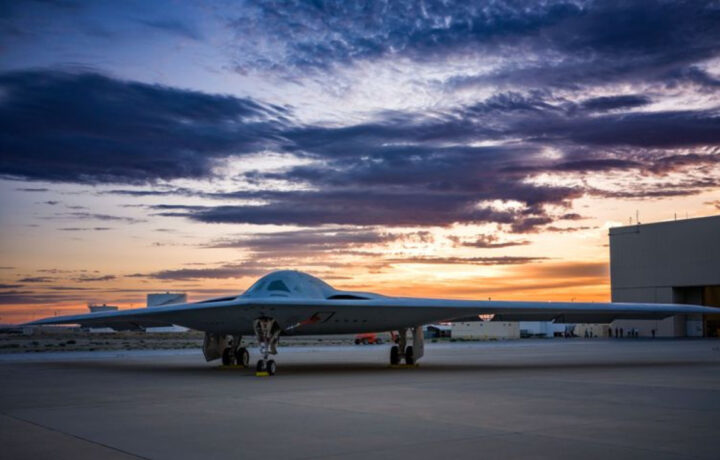The future backbone of the United States Air Force’s bomber fleet could be a bit less pricey than expected. The fiscal 2025 request for the Northrop Grumman B-21 Raider, which was released last month, had sought $2.7 billion for procurement of a still unspecified number of initial production aircraft.
That contrasted with the $4.0 billion projected last year. In addition, the procurement request projection for fiscal 2026 was also lowered by about $600 million to $3.9 billion. The reduced budget projects for the next-generation stealth bomber were in part due to lower prices negotiated with contractors, Bloomberg first reported.
This has been seen as a rare example of successful cost-cutting for the Pentagon. This price reduction comes just months after the Air Force stated that the B-21 program was expected to cost $203 billion over 30 years, with each bomber having an expected average procurement cost of $692 million.
“The procurement budget was adjusted to account for favorable negotiated low rate production prices, as well as supporting budget-year execution needs,” the United States Air Force said in a statement. “There were no material reductions in program quantities or scope.”
The procurement funding includes the basic aircraft – known as the “flyway” costs – as well as support equipment, training, initial spares, and engineering change orders.
Most Advanced and Most Expensive Bomber
The B-21 Raider, which is set to replace the aging B-1B Lancer and B-2 Spirit in the coming decade, has been touted as being the most advanced bomber aircraft ever built – but also the most expensive. It was already on track to be one of the Pentagon’s priciest platforms to date, and there had been concerns that the United States Air Force would be hard-pressed to buy enough of the Raider bombers in coming years.
In February, Pentagon acquisition and sustainment chief William LaPlante said the B-21 Raider was structured for a low production rate to make it less vulnerable to budget cuts. While speaking at a virtual RAND event, LaPlante noted that the B-21 program was “designed to be resilient to Washington turbulence.”
In fact, the B-21 program was mapped out to avoid a Nunn-McCurdy Act breach that could come from out-of-control development costs. That legislation allows lawmakers to better manage the cost of Major Defense Acquisition Programs, as it requires the Pentagon to inform lawmakers if a program will incur a cost or schedule overrun of more than 15 percent.
The Raider entered its Low-Rate Initial Production (LRIP) in January – and while it is a pricey aircraft, maker Northrop Grumman had announced it expected to lose money during this phase.
The first five production lots of the B-21 will total just 21 airplanes. That is by design and is meant to ensure the costs are managed according. The Raider program is expected to include more than 100 bombers, and it has most of its production covered under a cost-plus contract, which means the Air Force – and in turn the American taxpayer – will reimburse the company for the extra expenses it incurs due to inflation.
By contrast, when the B-2 Spirit was produced, initial plans called for 132 aircraft to be built. Then Congress drastically reduced and then terminated the program after only 21 had been built. That resulted in the cost per aircraft climbing to nearly $2 billion!
Production Lines in Place
As previously reported, the B-21 took its maiden flight in November of last year. At that point, six prototype aircraft were already in various stages of production, and they were being built on the same lines, using the same tools and processes that would build the eventual production aircraft. That approach has enabled production engineers and technicians to capture lessons learned and apply them directly to follow-on aircraft, driving home a focus on repeatability, producibility, and quality.
In addition to building the B-21 Raider with state-of-the-art technology and capabilities, Air Force officials have further emphasized the focus on containing costs while simultaneously allowing for maximum flexibility. The B-21 has been noted for being designed with an open systems architecture that would enable rapid future capability integration to keep pace with the highly contested threat environment.
Some 8,000 employees of Northrop Grumman and various other defense contractors of all sizes, spread across 40 states, have been secretly building the Air Force’s new stealth bomber. Great efforts have been taken to prevent China and other potential adversaries from gaining access to its technology.
The B-21 represents the aircraft leg of the U.S. nuclear triad. The U.S. Air Force has not disclosed any cost, schedule, or performance issues. However, it was just last week that the U.S. Navy warned that the delivery of the first of its new Columbia-class ballistic missile submarines, which make up the naval arm of the triad, is at least 16 months behind schedule.




